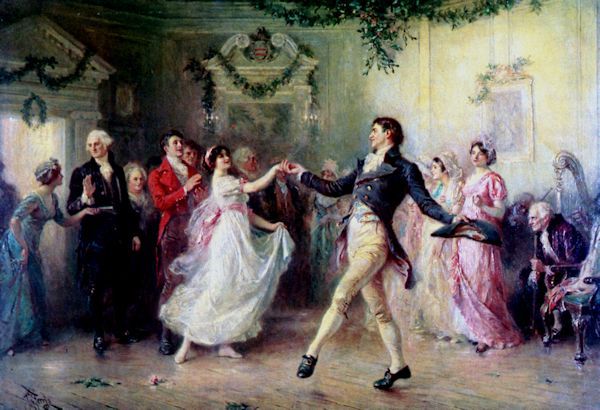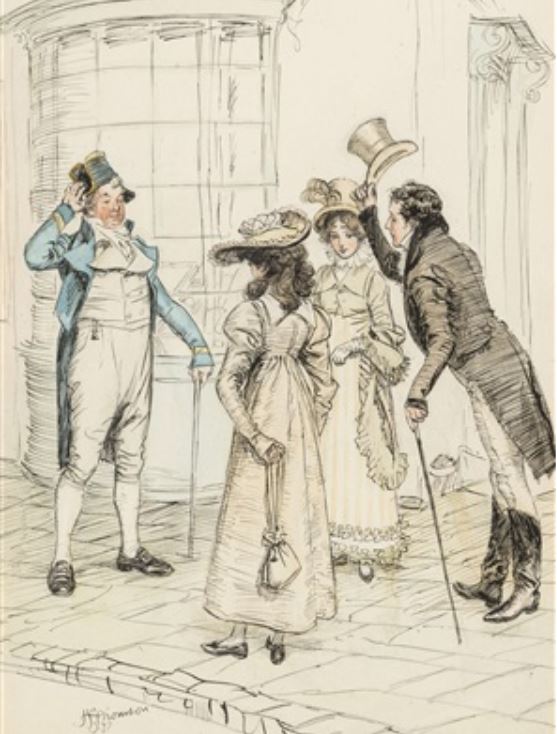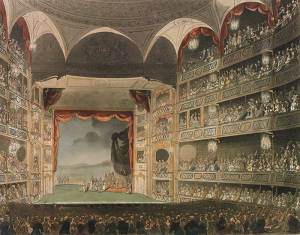 Dating
Dating
I admit I’ve been out of the dating scene for (ahem) a few years now. Okay, over twenty. But from what my single friends tell me, not much has changed since I was dated. Basically, a man asks out a woman, (or if she’s braver than I ever was, she asks him out). They might meet online, or be introduced by a friend or see one another at a party, but eventually, they end up on that first date. It might be dinner or drinks or just coffee. It might involve a movie or miniature golf or hiking or visiting a museum, sometimes including another couple.
These days, at least in the US, dating never involves parents or chaperones, and no one thinks anything of an adult man and a woman being alone together in a car or a house. Dating in Regency England was very different.
Courtship
Historically, dating was called courting or wooing. A young lady of good breeding who wished to keep her reputation pristine so she would be a candidate for marriage never, ever allowed herself alone with a man. (The double standard is, of course, that the man could have a very sullied reputation and still be considered a good match if he were wealthy and well-connected enough, but that’s another matter.) Therefore, courting was a fairly public affair.
 Introduction
Introduction
The rules of society dictated that a gentleman and lady not speak to one another without an introduction by a mutual acquaintance. If they were both at a ball, dinner party, soiree, or musicale at a private home, the host, or more ideally, the hostess could make the introduction. If they wished to make an acquaintance at the opera or theater or another public place, a mutual friend could introduce them.
Imagine a gentleman sees a lady from across the room. Who is she? He asks a friend who knows of her. He is intrigued. He finds the hostess and asks her to introduce them. She complies and makes the introduction. A glance. A shy smile. He asks for the next dance. She blushes and accepts. And thus it begans.
Getting to Know You
If the gentleman wished to get better acquainted with the lady he had met the night before, he would send her flowers. Soon after, he would pay a visit to the family during their “at home” hours. At home hours were held at the family’s home when they received callers. Her mother or aunt or another chaperone would be present. They speak and flirt discreetly, all within view of the chaperone.
Wooing the Lady

His next obvious step was to take her for a stroll in one of the nearby walking parks, or take her riding, either on horseback or in an open carriage–open being the operative word since riding in a closed carriage could ruin her reputation as quickly as being alone in a house with a man. Taking her to the theatre or opera or museums might follow. He might even simply sit with her at events they both attend, as a way of courting her. During these outings or events, a chaperone generally remained close at hand.
At this point, people would say that they had “formed an attachment” or that they had a tendre for one another.
Courtship Do’s and Don’ts
Courting could be short or take place over a long period of time. If she refused to dance with any other man but him, she basically announced to the world that she was unofficially engaged. Dancing together more than twice in one night was essentially an annoucmennt of engagment. Public opinion placed them as engaged once people began to notice how frequently they saw the couple together. If he failed to make an offer of marriage for her, people said he had failed to come up to scratch and shook their heads and wondered if she were unsuitable or if he were. She might be labeled as “fast,” a terrible label for a proper young lady that could harm her chances of making a match. Either way, the couple’s reputations suffered.
Such courting practices may sound rigid and even sterile to the modern-day woman, but I think it leaves so much open. For one thing, they relied on witty conversation rather than getting physical to get to know each other. Since the courting practices were pretty predictable, a man had to use creativity to impress a lady.
Engagement
Once he felt secure that she returned his affections (or determined to make the mach, regardless) the gentleman would make an  appointment with the young lady’s father and formally ask for her hand in marriage. His income would be scrutinized. A thoughtful father considered his daughter’s wishes in the matter.
appointment with the young lady’s father and formally ask for her hand in marriage. His income would be scrutinized. A thoughtful father considered his daughter’s wishes in the matter.
If agreeable, the father’s attorney and the groom’s attorney drew up a prenuptial agreement called a marriage settlement. This called what went to her such as her pin money, dress allowance, jointure, and other ways he would provide for her in life and upon his death. It also spelled out her dowry that went to the man. With all that settled, the father broke the news to the girl and the wedding preparations would commence.
 Wedding Annoucement
Wedding Annoucement
The wedding announcement appeared in the social column of the newspapers after the wedding commenced. Some believed the wedding was not official until the annoucement of it appeared in print.
Regency Love
My job as a Regency romance author is to keep in mind these social customs known as “manners and mores” and yet find unique ways for my hero and heroine to meet and fall in love.
It’s fun to create a unique twist on acceptable courting, throwing in lots of obstacles in the way of their happily ever after, and revealing the final, happy, triumphant ending. That doesn’t make me a hopeless romantic, it makes me a hopeful romantic.
My motto is “Believe in happily ever after” because I do. Do you?

I absolutely love history!!!
Thank you for your posts on dating and why it’s called the regency period.
Keep up the great work!
I love that you call yourself a *hopeful* romantic.
I consider myself the same…. that’s why I read romances.